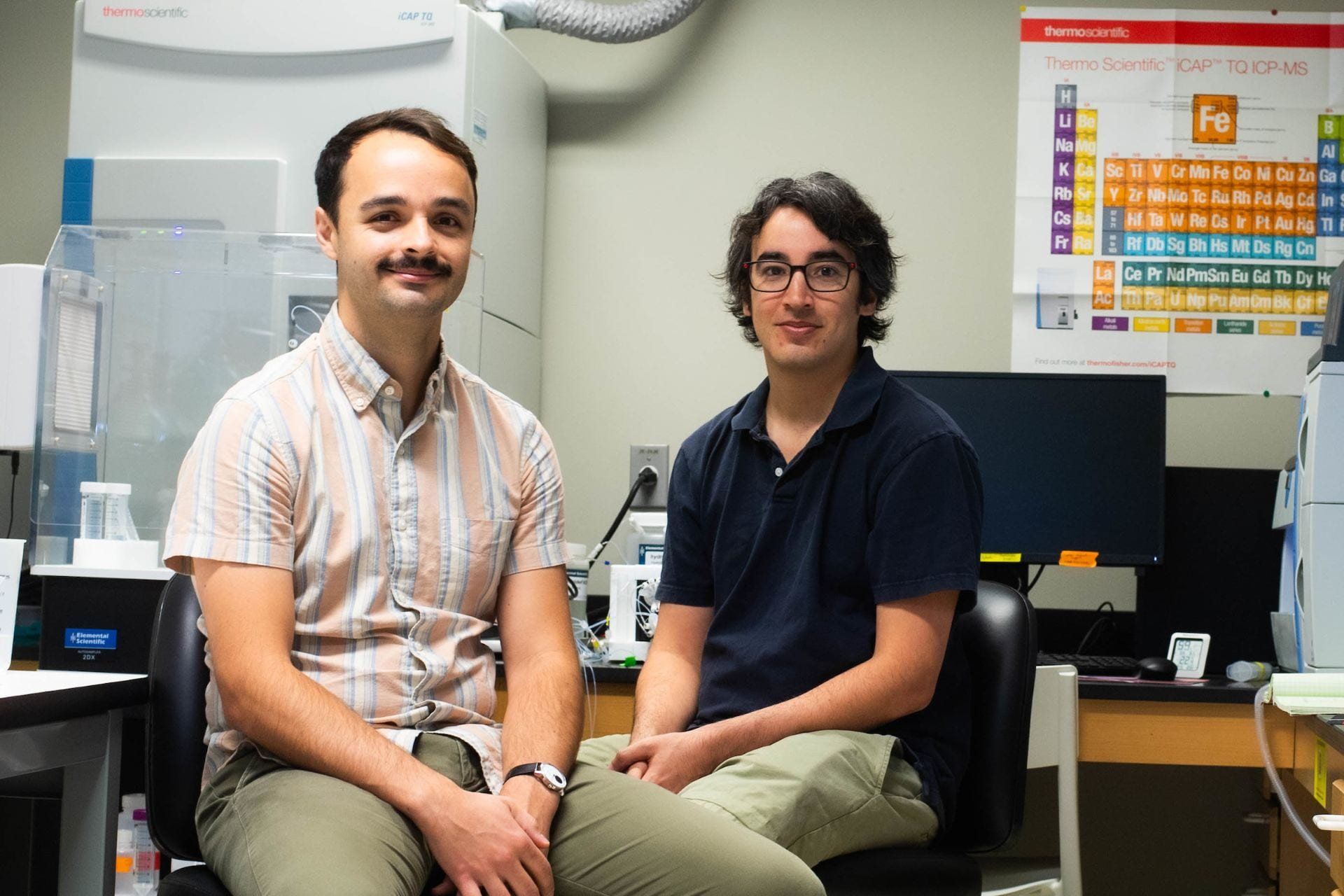planting climate change impact
Research team lands DOE grant to investigate carbon storage in soil

Two Rice University researchers just received DOE funding for carbon storage research. Photo by Gustavo Raskosky/Rice University
Two researchers at Rice University are digging into how soil is formed with hopes to better understand carbon storage and potential new methods for combating climate change.
Backed by a three-year grant from the Department of Energy, the research is led by Mark Torres, an assistant professor of Earth, environmental and planetary sciences; and Evan Ramos, a postdoctoral fellow in the Torres lab. Co-investigators include professors and scientists with the Brown University, University of Massachusetts Amherst and Lawrence Berkeley National Laboratory.
According to a release from Rice, the team aims to investigate the processes that allow soil to store roughly three times as much carbon as organic matter compared to Earth's atmosphere.
“Maybe there’s a way to harness Earth’s natural mechanisms of sequestering carbon to combat climate change,” Torres said in a statement. “But to do that, we first have to understand how soils actually work.”
The team will analyze samples collected from different areas of the East River watershed in Colorado. Prior research has shown that rivers have been great resources for investigating chemical reactions that have taken place as soil is formed. Additionally, research supports that "clay plays a role in storing carbon derived from organic sources," according to Rice.
"We want to know when and how clay minerals form because they’re these big, platy, flat minerals with a high surface area that basically shield the organic carbon in the soil," Ramos said in the statement. "We think they protect that organic carbon from breakdown and allow it to grow in abundance.”
Additionally, the researchers plan to create a model that better quantifies the stabilization of organic carbon over time. According to Torres, the model could provide a basis for predicting carbon dioxide changes in Earth's atmosphere.
"We’re trying to understand what keeps carbon in soils, so we can get better at factoring in their role in climate models and render predictions of carbon dioxide changes in the atmosphere more detailed and accurate,” Torres explained in the statement.
The DOE and Rice have partnered on a number of projects related to the energy transition in recent months. Last week, Rice announced that it would host the Carbon Management Community Summit this fall, sponsored by the DOE, and in partnership with the city of Houston and climate change-focused multimedia company Climate Now.
In July the DOE announced $100 million in funding for its SCALEUP program at an event for more than 100 energy innovators at the university.
Rice also recently opened its 250,000-square-foot Ralph S. O’Connor Building for Engineering and Science. The state-of-the-art facility is the new home for four key research areas at Rice: advanced materials, quantum science and computing, urban research and innovation, and the energy transition.